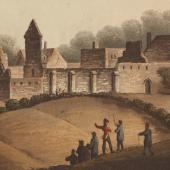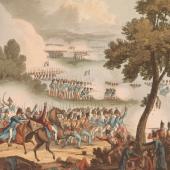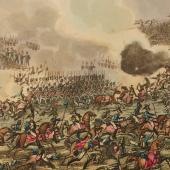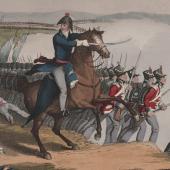-

A detailed account
-

La dernière campagne
-

Bataille de Waterloo (1)
-

Bataille de Waterloo (2)
-

Hougoumont
-

Thomas Picton (1)
-

Thomas Picton (2)
-

William Ponsonby
-

Cuirassiers and Highlanders
-

Cuirassiers and hollow squares
-

A last but desperate effort
-

Waterloo decided
-

Victories of the Duke
-

Grand view
-

The Earl of Uxbridge
-

Blücher and Wellington
-

William Turnor
Waterloo and Wavre
A damned serious business
Wellington mustered his army on advantageous ground half way between Mont St Jean and Plancenoit, to the south of Brussels. He set up his Headquarters at Waterloo, a village to the rear of his army. Battle was joined on 18 June; the first shot was fired at approximately 11.30 in the morning.
On both sides, objectives were simple. Napoleon sought to break the Allied resistance before the Prussians could arrive on the field. Wellington sought to hold ground and bleed the enemy of precious troops. Much of the Prussian army was marching towards Napoleon’s right flank, with the rest holding Marshal Grouchy’s two corps ten miles to the east at Wavre, where fighting began in mid-afternoon. The battle at Waterloo was, as Wellington said the next day, ‘the nearest run thing you ever saw in your life’. At five o’clock the Prussians were threatening French positions at Plancenoit. Around six o’clock, with the fall of Wellington’s central strongpoint, the farmhouse of La Haye Sainte, the French were winning. But two hours later, after the failure of Napoleon’s final assault, the Duke was able to order a general advance against a suddenly demoralised enemy: the French army broke in a rout and was driven from the field.
Learn more about the defence of La Haye Sainte in this video.